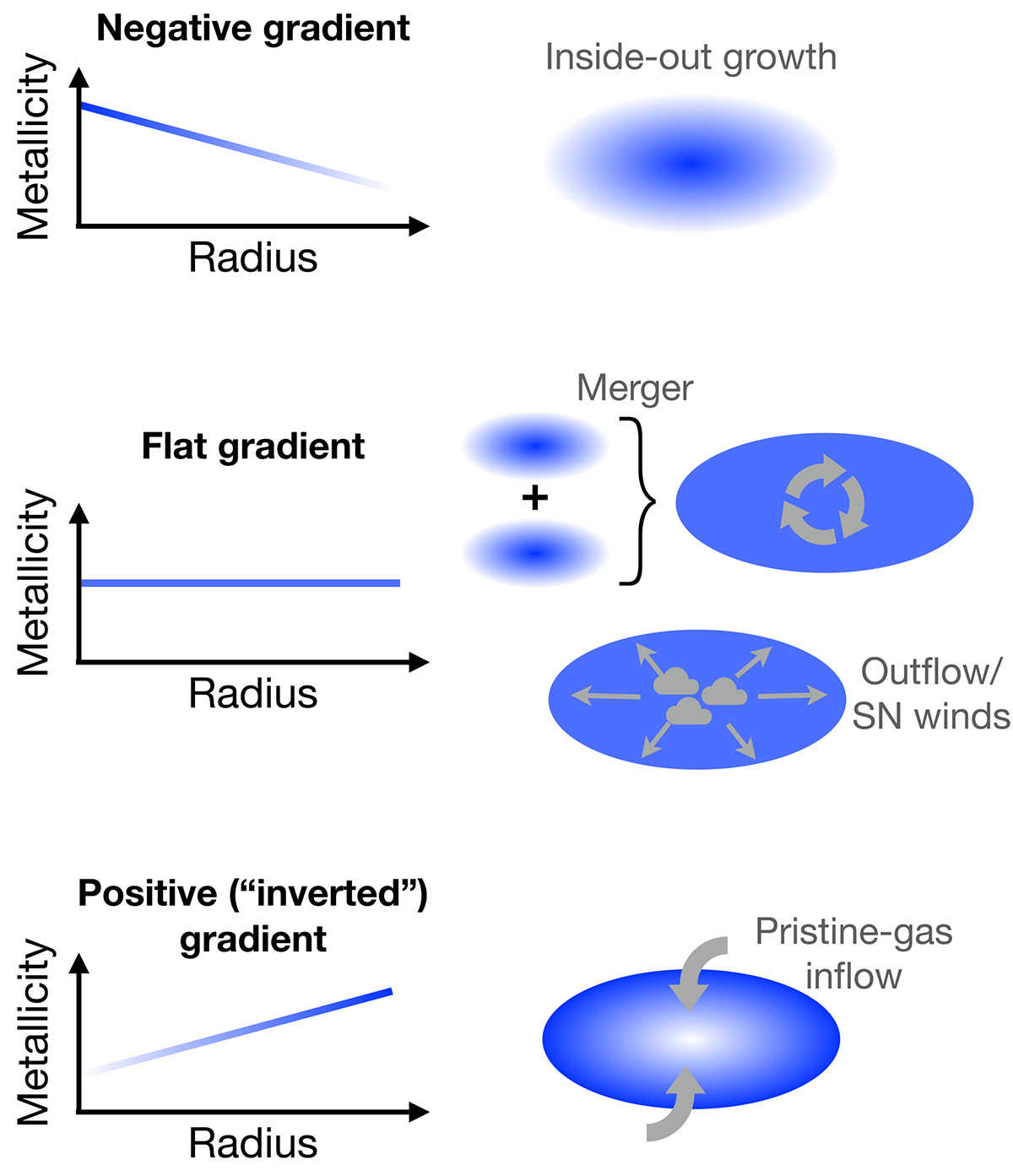Fig. 1.

Download original image
Simple sketch summarising the three main classes of radial gas-phase metallicity gradients and possible physical origin. Negative (decreasing) gradients can be interpreted as the result of the inside-out growth of a galaxy, in which star formation and the following chemical enrichment start earlier in the inner regions. Flat gradients can result from radial mixing processes, such as galaxy mergers as well as SN winds redistributing the metals in the interstellar medium (ISM) and galactic outflows of metal-enriched gas evacuated (or re-accreted) in the outer regions. Positive (increasing) inverted gradients may arise from accretion of pristine gas to the central regions of the galaxy; this can also lead to flattened gradients.
Current usage metrics show cumulative count of Article Views (full-text article views including HTML views, PDF and ePub downloads, according to the available data) and Abstracts Views on Vision4Press platform.
Data correspond to usage on the plateform after 2015. The current usage metrics is available 48-96 hours after online publication and is updated daily on week days.
Initial download of the metrics may take a while.


